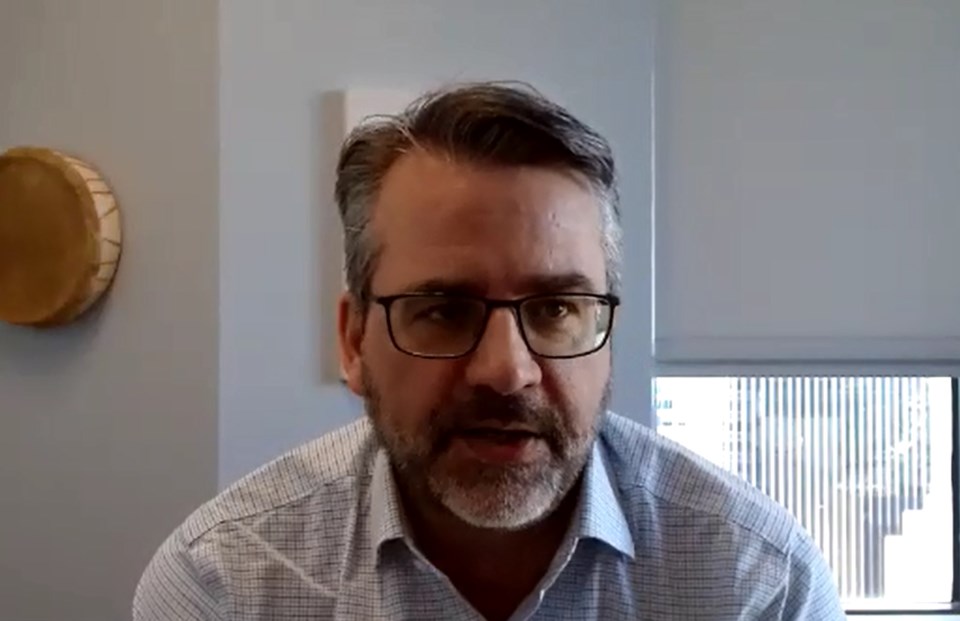THUNDER BAY — Representatives of 15 First Nations have started work with a federal agency to assess the potential impacts of mining and other development in Ontario’s mineral-rich Ring of Fire.
The newly formed regional assessment working group has been directed to produce a final report within 30 months, Ian Ketcheson of the Impact Assessment Agency said Tuesday in a Zoom interview.
Ketcheson, the agency’s vice-president of Indigenous relations, was speaking a day after the agency announced the formation of a working group to conduct a regional assessment.
The 15 First Nations represented include Marten Falls and Webequie, the two communities nearest the Eagle’s Nest project where an international mining company wants to operate a large underground mine.
The other participating First Nations are Aroland, Attawapiskat, Constance Lake, Eabametoong, Fort Albany, Ginoogaming, Kashechewan, Long Lake #58, Missanabie, Moose, Neskantaga, Nibinamik (Summer Beaver) and Weenusk.
The working group’s formation follows “a lot of collaborative work over the last several years,” said Ketcheson, adding that the agency will “work hand in hand with our First Nation partners to undertake this study.”
A regional assessment goes deeper than a typical impact assessment, he explained.
“Unlike impact assessments which focus on specific projects, regional assessments are planning tools that we can use to assess both the negative and positive effects of multiple developments in a specific area, and we’re ready to kind of roll up our sleeves and get going on carrying out this work related to the Ring of Fire.”
Regional assessments like this one “are planning tools that allow everyone to sort of step back and look at the broader landscape to understand all of the potential interconnected effects, the cumulative effects, that might come from multiple activities,” he said.
The agency-First Nations collaboration has already sprung into action, Ketcheson said.
“The working group is gathering this week to start to plan out the work that will happen. The terms of reference set out a 30-month time frame, but there’s lots of work that’s going to happen in the meantime.”
The working group will collect information, prepare a report and submit it to First Nations chiefs and the federal environment minister.
A vast region in the James Bay Lowlands, the Ring of Fire is known to be rich in chromite, nickel, cobalt and other minerals.
An Australian company, Wyloo, wants to start a large nickel, copper and platinum group metals mine at its Eagle’s Nest property approximately 540 kilometres northeast of Thunder Bay.
Such “critical minerals” are a key part of the Fortress Am-Can strategy put forth this month by Premier Doug Ford.
A news release from the Premier’s Office described Fortress Am-Can as “a renewed strategic alliance between Canada and the United States” and included “critical mineral supplies” as one component.
In response, the Matawa Chiefs Council – chiefs of nine of the 15 First Nations represented in the regional assessment working group – released a statement calling on Ford “to reconsider the colonial approach underway and to meet with us collectively as a matter of priority.”
The province’s “authority to grant access to critical minerals” is only “precarious,” according to the chiefs’ statement.
Ketcheson said a critical part of the process “is to take the time to sit down and get to know the communities that you’re working with, the people that you’re working with.
“And really if you create that sort of strong relationship foundation for dialogue, you can do some pretty amazing things.
“And in a part of the country where the perspectives are so diverse, the implications for communities of future development are huge, and the potential for development in an area are so vast, I’m just really proud that we’ve been able to make it to this point and looking forward to the work that’s ahead of us.”
